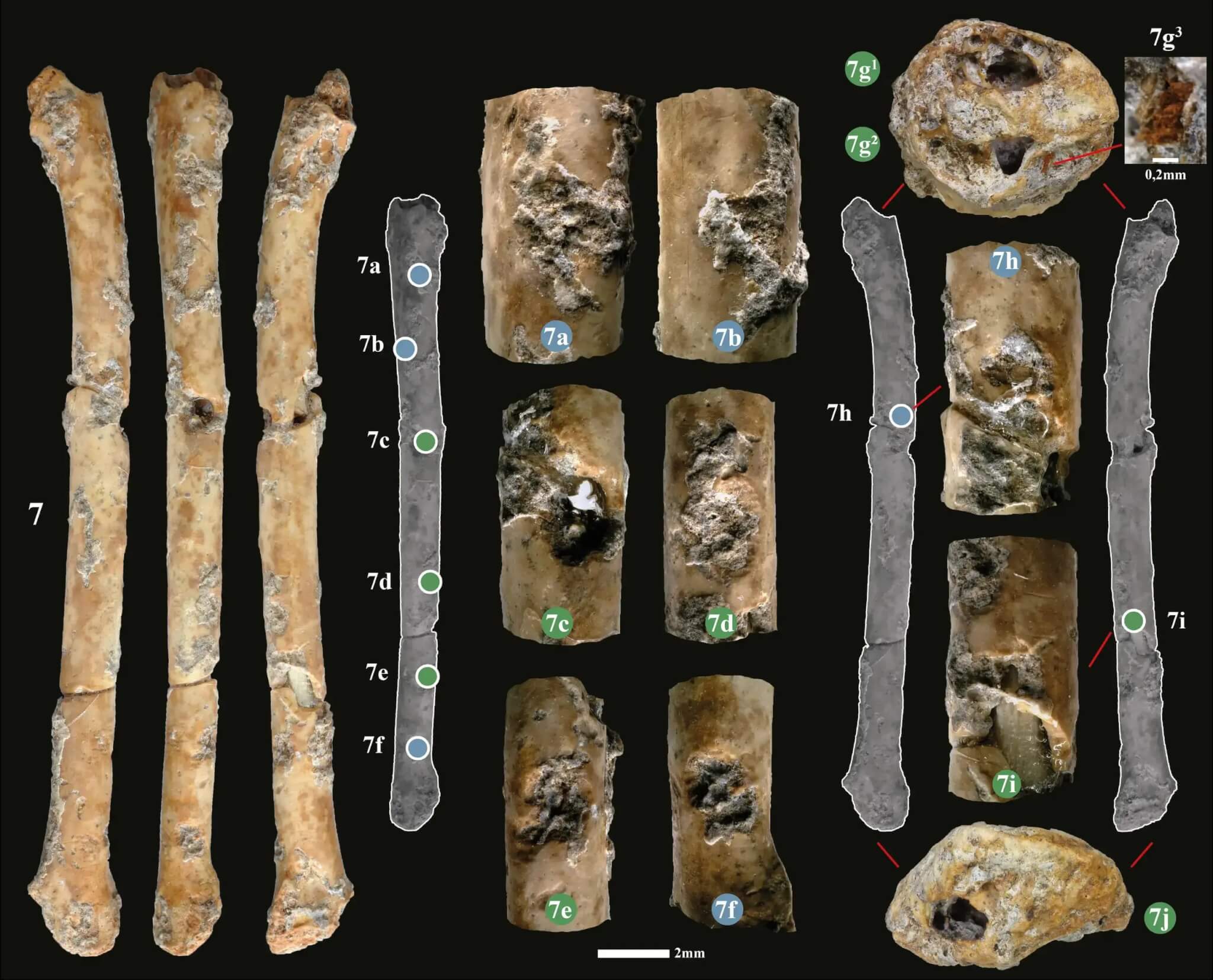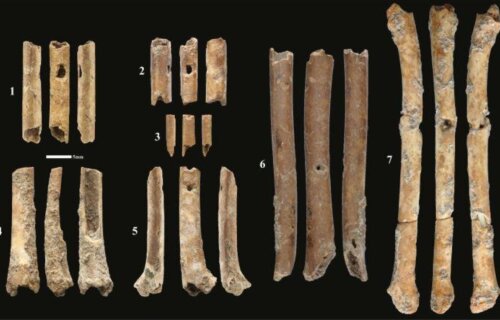RICHMOND, Va. — Researchers have discovered 12,000-year-old musical instruments that appear to be prehistoric flutes. It shouldn’t be surprising that researchers at Virginia Commonwealth University say they sound like birds singing — since the flutes are made of actual bird bones!
Although the prehistoric site of Eynan-Mallaha in northern Israel has been thoroughly examined since 1955, it still holds some surprises. The seven prehistoric wind instruments, recently identified by a Franco-Israeli team, are the subject of an article published in Scientific Reports.
The Natufians, the Near Eastern civilization that occupied a village on the site between 13000 and 9700 BC, are thought to have used them for hunting, music, or to communicate with the birds themselves. The study authors explain that discovering these aerophones, a class of musical instruments in which a vibrating mass of air produces the initial sound, is extremely rare. In fact, they are the first to be discovered in the Near East.
The “flutes,” made from the bones of a small waterfowl, produce a sound similar to certain birds of prey — thought to be Eurasian sparrowhawk and common kestrel — when someone blows air into them. Smaller bones would have been deliberately selected in order to obtain the high-pitched sounds necessary to imitate particular raptors.

“Although bone ‘flutes’ or ‘aerophones’ are known from other archaeological sites elsewhere in the world, they are quite rare and have been found mostly in Europe. These are the first to ever be identified from the Near East and date to circa 12,000 years ago,” says Tal Simmons, Ph.D., a professor in the Department of Forensic Science at VCU’s College of Humanities and Sciences. “The flutes actually make the sounds of other birds of prey that were hunted at the site.”
“All seven were intentionally made by grooving and rotational scraping with small stone blades into the long bones of two types of birds – the Eurasian teal and the Eurasian coot. They all show microscopic use-wear indicating they were, in fact, used or played,” Simmons explains in a university release. “They are also really unique because the sound they produce is very similar to that of two specific birds of prey that were hunted by the people living at the site where they were discovered, namely the kestrel and the sparrowhawk.”
“Because these are some of the earliest aerophones, it sheds light on the role of music in Natufian culture – and perhaps on the relationship of Natufian peoples with birds of prey,” the researcher continues.
“It may have been as a duck call – to try to lure the birds so that they could be hunted. However, it may also have been an attempt to spiritually commune or communicate with these birds of prey; they were important to Natufian – and earlier – cultures in the Levant, as seen in the disproportionate number of raptor talons in archaeological bird-bone assemblages. These may have been worn by the prehistoric people as ritual ‘jewelry’ and may even have been ‘totem’ animals.”
The discovery of the rare prehistoric sound instruments was carried out by an international team of archaeologists, archaeozoologists, and ethnomusicologists, led by Laurent Davin (Hebrew University of Jerusalem, Israel and CNRS) and José-Miguel Tejero (University of Vienna, Austria and University of Barcelona, Spain).
You might also be interested in:
- Best Of The Best Bird Feeders In 2023: Top 5 Products Most Recommended By Experts
- The world’s first horse riders saddled up 5,000 years ago, ancient bones reveal
- Lost world of spectacular prehistoric birds unearthed near the Great Wall of China
South West News Service writer Dean Murray contributed to this report.

